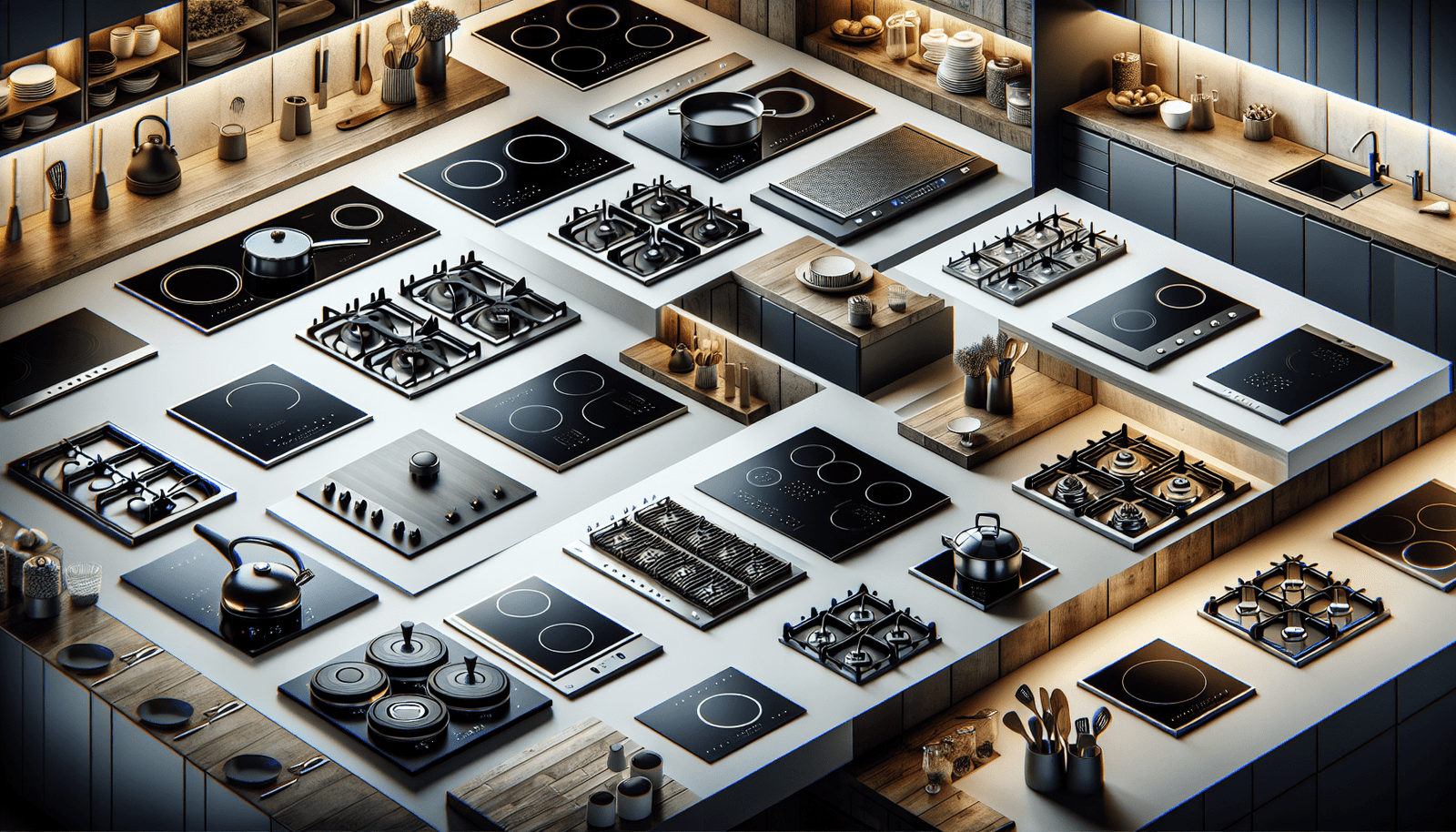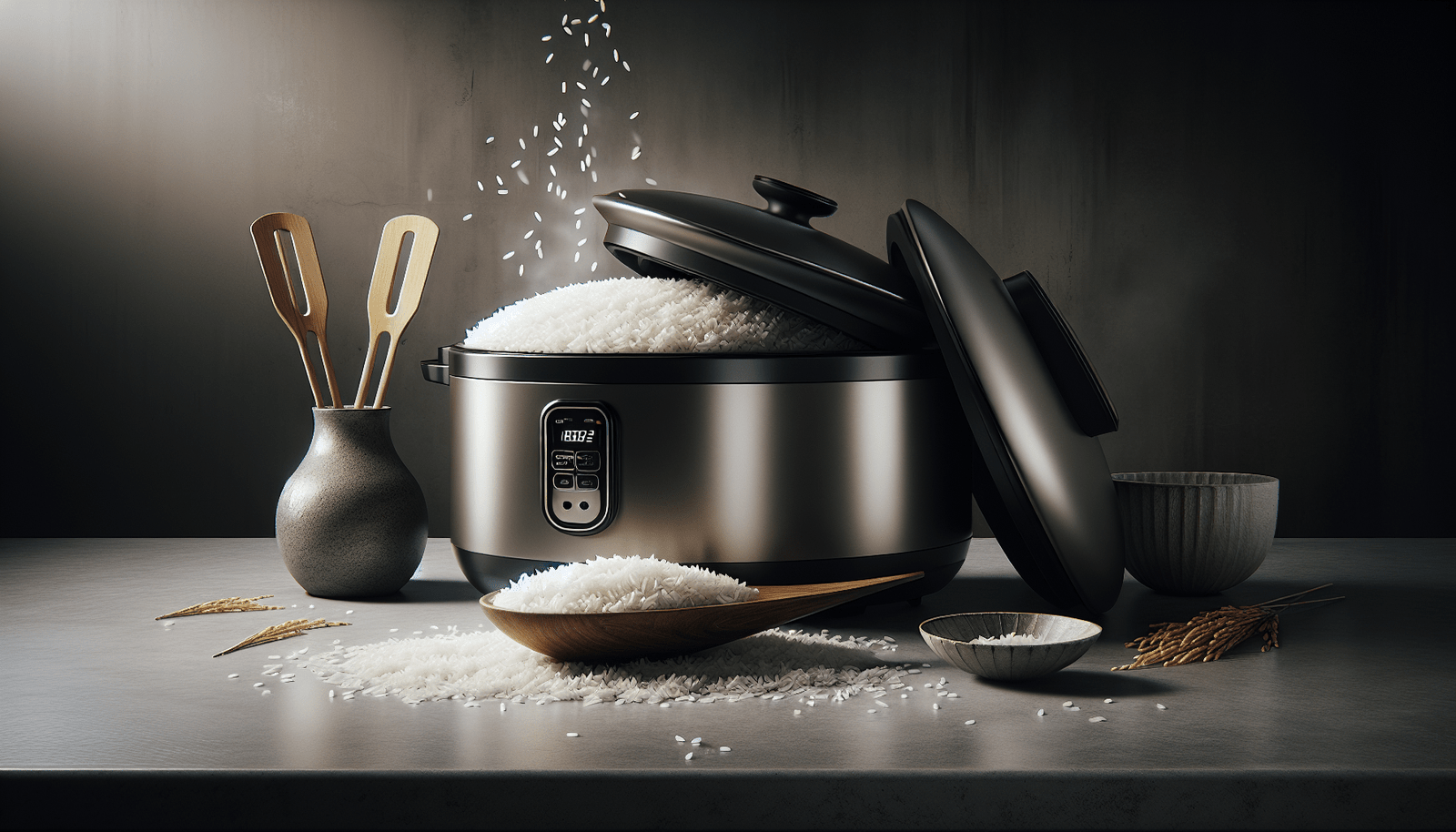Embark on a journey with “The Essential Guide to Commercial Blenders,” your ultimate companion to navigating the intricate world of blending technology in a commercial setting. Within the prestigious walls of Cooking Appliance World, where culinary aspirations take flight, this guide stands out as a beacon for both seasoned chefs and burgeoning culinary talents eager to elevate their kitchen prowess. Here, you’ll uncover the secrets to selecting the perfect blender that aligns with your professional needs and aspirations, complemented by expert reviews and unbeatable deals that promise to enrich your culinary creations. Dive into an ocean of options and empower your kitchen with the blend of efficiency and creativity that only the best commercial blenders can deliver.

Understanding Commercial Blenders
Definition and key differences from residential blenders
When you’re glancing over the options for kitchen blenders, it’s crucial to distinguish between commercial and residential types. Commercial blenders are engineered for frequent use in settings like restaurants, cafes, and bars, where durability, power, and capacity take precedence. Unlike their residential counterparts, which are designed for occasional use, commercial blenders can handle large volumes of food or drink without overheating, can pulverize tougher ingredients, and typically have a longer lifespan.
Importance in commercial settings
In a commercial setting, a blender isn’t just a handy tool; it’s an essential workhorse. Whether you’re concocting velvety smoothies, blending up sauces, or crafting frozen cocktails, the efficiency and quality of your creations depend heavily on the capabilities of your blender. A high-performing commercial blender can speed up prep time, ensure consistently smooth textures, and withstand the rigors of a busy kitchen or bar.
Types of commercial blenders
Commercial blenders come in various types to suit different needs. Bar blenders are perfect for making smoothies, frozen drinks, or cocktails. Food blenders are more suited to kitchen environments, where they can handle hot, dense, or tough ingredients. Specialty blenders cater to specific needs like nut butter production or dough mixing, providing tailored functions and settings.
Power and Performance
Motor power and its impact on performance
The motor is the heart of a blender. A powerful motor ensures that your commercial blender performs efficiently through longer periods of operation and through tougher ingredients. Higher wattage translates to more power, which means a smoother blend in less time. Before committing to a purchase, consider the type of food or drink you’ll be blending most frequently and choose a model that has the necessary power to handle those tasks easily.
Blade design and materials
Blades are critical for effective blending. In commercial blenders, blades are usually made from stainless steel for durability and strength. The design of the blades can vary, with some optimized for crushing ice and others designed for more general use. Sharp, well-designed blades make for quicker, more uniform blending and can handle tough ingredients without dulling quickly.
The role of RPM (Revolutions per Minute)
RPM, or revolutions per minute, indicates how fast the blender’s blades can spin. Higher RPMs can pulverize contents more quickly and produce smoother textures, but variable speed control can be beneficial for tasks requiring a gentler touch, such as chopping vegetables or making dough. The right RPM for your operations depends on your specific blending tasks.
Capacity and Size
Choosing the right size for your operation
Capacity is a crucial factor, as it directly affects the volume of product you can produce at once. For high-volume establishments, choosing a blender with a large jug can reduce prep time and increase efficiency. However, larger blenders require more storage space, so it’s essential to balance capacity needs with the space available in your kitchen.
Impact of blender size on workflow
A blender that’s too small can bottleneck your workflow, requiring frequent batches for large orders. Conversely, a blender that’s too large might hinder quick jobs or small servings. Aim for a capacity that matches your busiest work scenarios without over or underestimating your needs.
Standard capacities available in the market
Commercial blenders can range in capacity from about 32 ounces to over 100 ounces. Selecting a size should be based on your menu’s requirements and the volume of business you anticipate. Consider the typical portion sizes you’ll be serving and choose accordingly.
Durability and Reliability
Materials used in construction
The longevity of a commercial blender depends significantly on its construction materials. Polycarbonate and stainless steel are common for their robustness and ability to withstand frequent use. These materials can take a beating and keep on blending, which is exactly what you need in a hectic commercial setting.
Warranty and service commitments from manufacturers
A sound warranty and reliable service from the manufacturer can save you headaches down the line. Look for brands that offer substantial warranties and accessible customer service. This ensures that should anything go wrong, you won’t be left in the lurch.
Expected lifespan of commercial blenders
Commercial blenders are built to last. With proper care and regular maintenance, a quality commercial blender can serve your business for years. The exact lifespan varies by brand and usage, but investing in a reputable model can minimize the need for frequent replacements.
Ease of Use and Maintenance
User-friendly features and controls
Nobody wants to wrestle with complicated equipment during a busy service. Look for blenders with intuitive controls and easy-to-read displays. Features like programmable settings and pulse options can also streamline operations and ensure consistency in your recipes.
Cleaning and maintenance best practices
Hygiene and maintenance can’t be overlooked in a commercial setting. Opt for blenders with detachable parts that are dishwasher safe and designs that prevent food traps. Regularly maintaining your blender by cleaning it thoroughly and checking for wear can greatly extend its useful life.
Availability of replacement parts
Before purchasing a blender, check the availability of replacement parts. Blenders with readily available parts can be repaired quickly, minimizing downtime in your operations. Some brands also offer professional maintenance services, which can be a worthwhile investment.
Safety Features
Safety mechanisms and certifications
Safety should never be compromised. Look for blenders with secure lids, locking jars, and non-slip bases. Certifications from recognized safety organizations can also offer peace of mind, ensuring the blender meets high safety standards.
Importance of training staff on safety
Educating your team on proper blender use and safety precautions is vital. This can prevent accidents and misuse, promoting a safer workplace. Regular training sessions can keep everyone up to speed on the best practices.
Common safety concerns and how to avoid them
Misuse and negligence can lead to injuries. To avoid common safety concerns, always make sure the blender is correctly assembled before use, and the lid is secure during operation. Never use metal utensils inside the blender, as they can damage the blades or create a safety hazard.
Technology and Innovation
Recent advancements in blender technology
The world of commercial blenders is continuously evolving, with new technologies enhancing performance and convenience. Features like noise reduction technology, touchscreen controls, and programmable settings are becoming more common, allowing for a more efficient and customizable blending experience.
Smart features and automation
Some high-end blenders now offer smart features, such as the ability to connect to Wi-Fi for remote operation or to download new blending programs. Automation can also play a role in ensuring consistent results, with some models able to adjust speed and power based on the consistency of the contents.
Impact of technology on efficiency and quality
Innovations in blender technology not only boost efficiency by speeding up prep time and reducing labor, but they can also elevate the quality of your offerings. Precise controls and advanced blending technology can produce smoother textures and more flavorful outcomes, enhancing the overall customer experience.
Cost and Budget Considerations
Understanding the price range and what affects cost
Commercial blenders vary widely in price, influenced by factors like power, capacity, and features. Basic models might be budget-friendly, but investing in a higher-end blender with additional features can offer better value in the long run through durability, efficiency, and versatility.
Balancing quality with budget constraints
It’s important to balance the quality of your blender with your budget constraints. While it might be tempting to save money upfront, a cheaper model could cost more over time in repairs or replacements. Evaluate the cost-benefit ratio and consider the long-term implications of your purchase.
Costs associated with maintenance and parts replacement
Don’t forget to factor in the ongoing costs of maintenance and parts replacement. These expenses can add up but investing in a blender that’s known for its durability and backed by a strong warranty can mitigate these costs over time.
Top Commercial Blender Brands
Overview of leading brands in the market
Brands like Vitamix, Blendtec, Waring, and Hamilton Beach are recognized leaders in the commercial blender market. Each brand offers a range of models designed to meet various needs, from basic blending to heavy-duty processing.
Comparative analysis of features and benefits
When comparing brands, look at the power, capacity, durability, warranty, and unique features. For instance, Vitamix models are renowned for their power and durability, while Blendtec blenders often boast innovative features and controls. Assess your specific needs and see which brand aligns best with your requirements.
Customer reviews and ratings
Customer feedback can provide invaluable insights into a blender’s performance in real-world settings. Reading reviews and ratings from other commercial users can highlight potential strengths and weaknesses, helping you to make a more informed decision.
Choosing the Right Commercial Blender for Your Business
Identifying your needs and requirements
Start by assessing your business’s specific needs. Consider the volume of food or drink you need to blend, the types of ingredients you’ll be processing, and any space or budget constraints. This will help narrow down your options.
Evaluating blender capacities and specifications
Once you know what you’re looking for, compare the capacities and specifications of different blenders. Consider motor power, speed settings, jug capacity, and ease of use. Take advantage of demonstrations or trial offers if available, to see how well a blender meets your needs in practice.
Advice on making a long-term investment decision
Investing in a commercial blender is a significant decision for your business. Look beyond the initial cost and consider the blender’s durability, maintenance needs, and how well it can grow with your business. Choosing the right blender can enhance your operations, improve product quality, and contribute to your business’s success in the long term.


